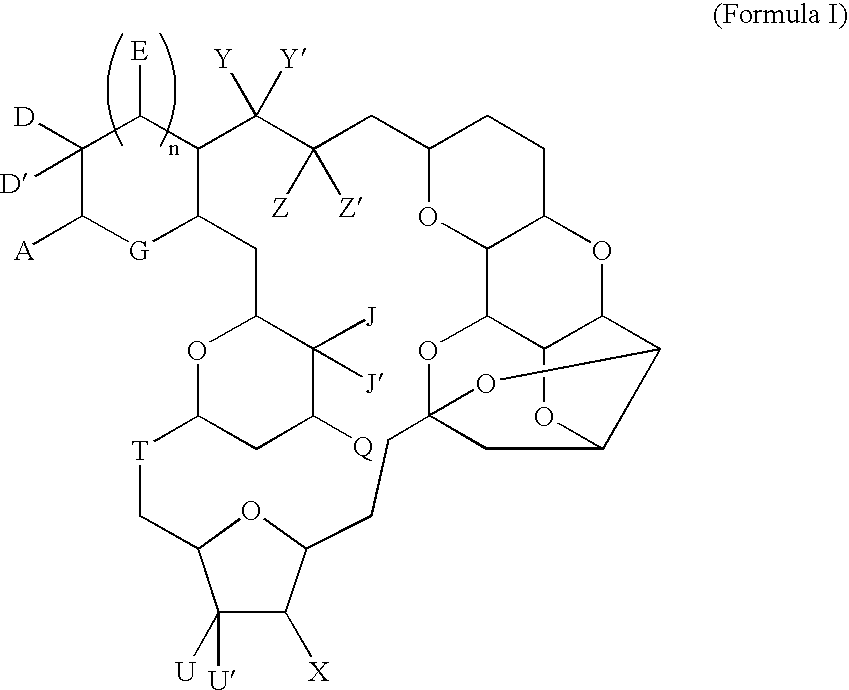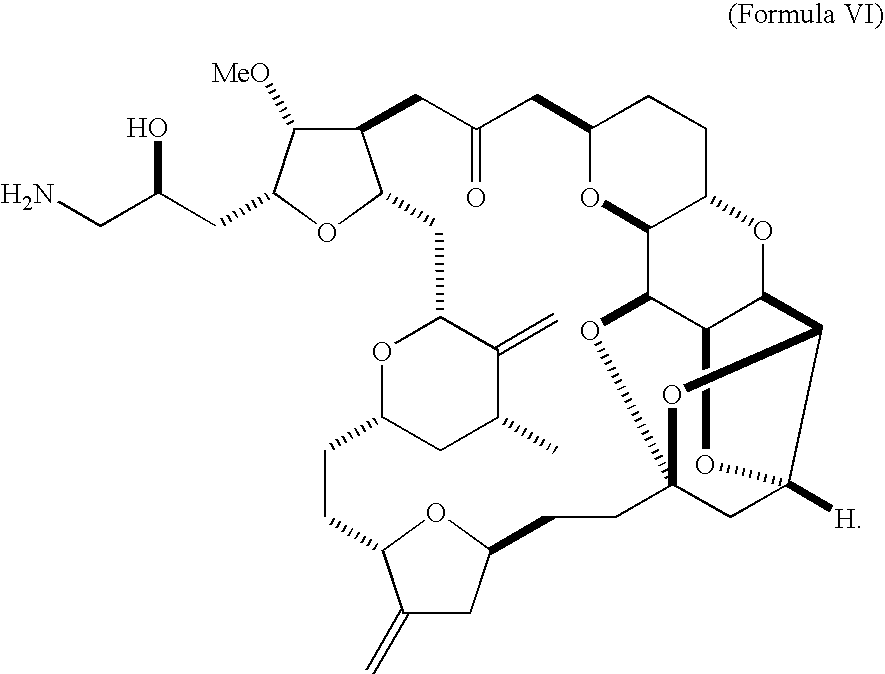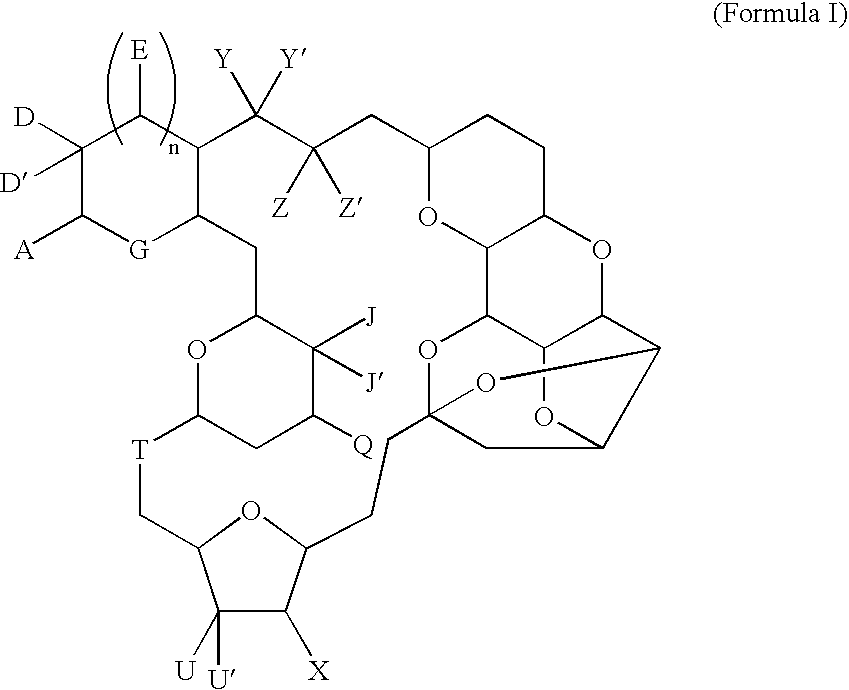Tubulin isotype screening in cancer therapy using halichondrin B analogs
a technology of halichondrine and isotype, which is applied in the direction of biocide, drug composition, instruments, etc., can solve the problems of adverse side effects, preventing the severe effects of these compounds, and significant number of patients not responding or receiving substantial benefits
- Summary
- Abstract
- Description
- Claims
- Application Information
AI Technical Summary
Benefits of technology
Problems solved by technology
Method used
Image
Examples
example 1
Establishing a Correlation Between Tubulin Isotypes and E7389 and E7974
Material and Methods
Cell Lines
[0147] The following human breast cancer cell lines were obtained from the ATCC. Cells were maintained according to ATCC-recommended culture conditions. AU565 (ATCC Catalog No. ATCC Catalog. No. CRL-2351), BT-20 (ATCC Catalog No. HTB-19), MCF7 (ATCC Catalog No. HTB22), MDA-MB-231 (ATCC Catalog No. HTB-26), MDA-MB-435 (ATCC Catalog No. HTB-129), MDA-MB-468 (ATCC Catalog No. HTB-132), HCC38 (ATCC Catalog No. CRL-2314), HCC70 (ATCC Catalog No. CRL-2315), HCC1143 (ATCC Catalog No. CRL-2321), HCC1428 (ATCC Catalog No. CRL-2327), HCC1500 (ATCC Catalog No. CRL-2329), HCC1806 (ATCC Catalog No. CRL-2335), HCC1954 (ATCC Catalog No. CRL-2338), HCC2218 (ATCC Catalog No. CRL-2343), UACC-812 (ATCC Catalog No. CRL-1897), UACC-893 (ATCC Catalog No. CRL-1902), ZR-75-1 (ATCC Catalog No. CRL-1500), ZR-75-30 (ATCC Catalog No. CRL-1504).
[0148] Cultured human breast can...
example 2
Use of Gene Chips in Identifying Patients for Treatment
[0168] The present Example describes the use of gene chip microarrays in selecting a patient for treatment using a particular anti-microtubule agent.
[0169] A sample from the cancer of the patient is obtained. The mRNA from the cells of the cancer cells is isolated. The isolated mRNA is reverse transcribed to yield cDNA which is then labeled with a fluorescent marker. The labeled cDNA is then incubated with a microarray containing nucleotides specific for tubulin isotypes as well as Tau, MAP4, and stathmin. The arrays is washed repeatedly using increasingly stringent washes to remove unhybridized cDNA. The array is then spun dry. The array with the hybridized labeled cDNA is then analyzes using a laser-scanning microscope. The net signal for each spot was determined by subtracting the local background from the average spot intensity. The signal intensities for each spot are then normalized.
[0170] Based on the expression levels...
PUM
| Property | Measurement | Unit |
|---|---|---|
| Molar density | aaaaa | aaaaa |
| Molar density | aaaaa | aaaaa |
| Molar density | aaaaa | aaaaa |
Abstract
Description
Claims
Application Information
 Login to View More
Login to View More - R&D
- Intellectual Property
- Life Sciences
- Materials
- Tech Scout
- Unparalleled Data Quality
- Higher Quality Content
- 60% Fewer Hallucinations
Browse by: Latest US Patents, China's latest patents, Technical Efficacy Thesaurus, Application Domain, Technology Topic, Popular Technical Reports.
© 2025 PatSnap. All rights reserved.Legal|Privacy policy|Modern Slavery Act Transparency Statement|Sitemap|About US| Contact US: help@patsnap.com



